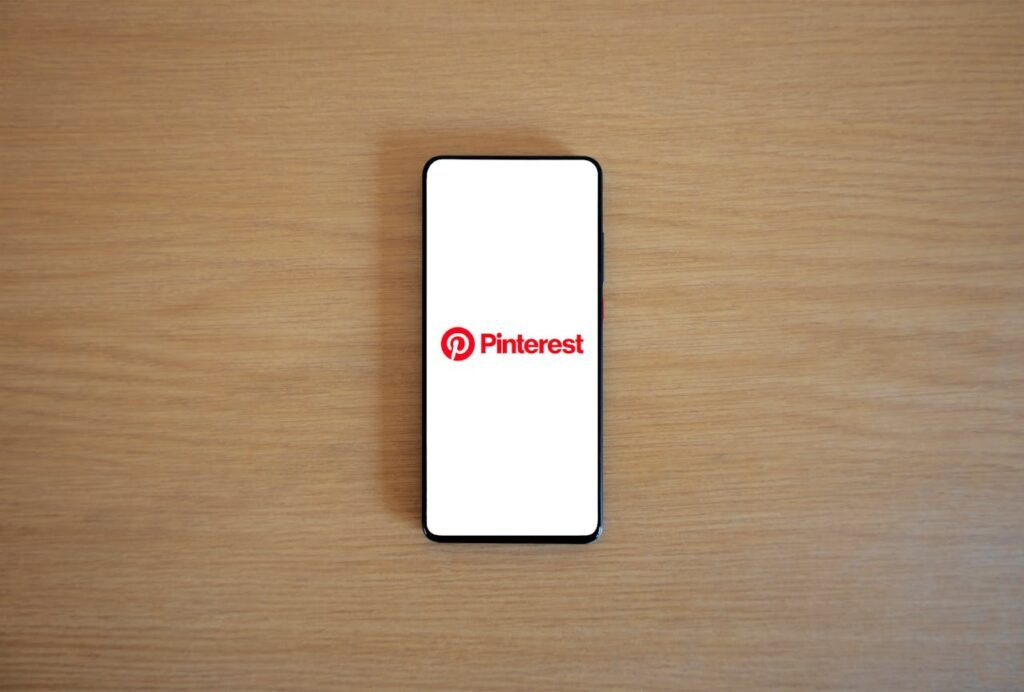Building a vibrant, engaged community around your brand is one of the most powerful ways to foster loyalty and drive growth. Social marketing, when done right, can help you connect with your audience on a deeper level and turn them into advocates for your brand. This article will explore effective social marketing tactics that can drive community engagement, ensuring your brand resonates with your audience and stands out in the crowded digital space.
Understanding Your Community
To drive meaningful engagement, you first need to understand who your community is. This involves analyzing your audience’s demographics, interests, and behaviors. Knowing what makes your audience tick will allow you to create content and interactions that genuinely resonate with them.
Analyze Your Audience
Start by diving into your analytics to gather insights about your audience. Look at the data from your social media platforms, website, and any other channels you use. Identify common themes in terms of age, location, interests, and behaviors. This will help you tailor your content to their preferences.
Engage in Conversations
Engage directly with your audience to understand their needs and desires better. Respond to comments, participate in discussions, and ask for feedback. These interactions will give you a clearer picture of what your community values and expects from your brand.
Creating Valuable Content
Content is king when it comes to social marketing. To drive engagement, your content needs to be valuable, relevant, and interesting to your audience. Focus on creating content that educates, entertains, or inspires your community.
Tell Stories
Stories are a powerful way to connect with your audience on an emotional level. Share stories about your brand’s journey, customer experiences, or behind-the-scenes glimpses into your operations. Personal and relatable stories can humanize your brand and foster a stronger connection with your audience.
Use Visual Content
Visual content tends to attract more engagement than text alone. Use high-quality images, videos, and graphics to capture your audience’s attention. Visual content can convey messages quickly and effectively, making it more likely to be shared and commented on.
Create Interactive Content
Interactive content encourages participation from your audience, making them feel more involved with your brand. Consider creating polls, quizzes, and interactive videos that prompt your audience to engage. This not only drives interaction but also provides valuable insights into their preferences and opinions.
Building a Community Atmosphere
A strong community feels like a welcoming and inclusive space where members can connect with each other and your brand. Creating this atmosphere requires consistent effort and genuine engagement.
Foster Inclusivity
Make sure your community feels inclusive and welcoming to everyone. Celebrate diversity and encourage members to share their unique perspectives. Highlighting diverse voices can help create a richer, more engaging community.
Encourage User-Generated Content
User-generated content (UGC) is a great way to involve your community and create a sense of ownership. Encourage your audience to share their experiences with your brand, whether through photos, videos, or testimonials. Feature UGC on your social media channels to show appreciation and inspire others to participate.
Host Events and Challenges
Hosting events and challenges can create excitement and encourage community participation. Whether it’s a virtual event, a photo challenge, or a social media takeover, these activities can bring your community together and provide opportunities for interaction.
Leveraging Social Media Platforms

Different social media platforms offer unique opportunities for community engagement. Understanding the strengths of each platform and tailoring your approach accordingly can enhance your efforts.
Facebook is ideal for creating groups and fostering discussions. Create a private or public group where your community members can interact, share ideas, and ask questions.
Regularly post engaging content and facilitate conversations to keep the group active and vibrant.
Instagram’s visual nature makes it perfect for sharing eye-catching content and stories. Use Instagram Stories to give behind-the-scenes looks, conduct polls, and share quick updates.
The platform’s interactive features, such as Q&A stickers and swipe-up links, can boost engagement.
Twitter is great for real-time engagement and quick updates. Use Twitter to share news, participate in trending conversations, and respond promptly to mentions and direct messages.
Twitter chats and hashtags can also help you connect with a broader audience.
For B2B brands, LinkedIn offers a professional platform for community building. Share industry insights, company updates, and thought leadership content. Participate in LinkedIn Groups related to your industry to engage with professionals and build your brand’s authority.
Engaging Through Content Calendars
A content calendar helps you plan and organize your social media content, ensuring consistent and timely engagement with your community.
Plan Ahead
Create a monthly content calendar that outlines what you’ll post and when. Include a mix of content types, such as blog posts, videos, and user-generated content. Planning ahead ensures you stay consistent and allows you to align your content with upcoming events or holidays.
Be Flexible
While planning is important, flexibility is key to staying relevant. Be prepared to adjust your content calendar based on real-time events or trending topics. This agility can help you engage with your audience on current issues and maintain a dynamic presence.
Regularly review the performance of your content to understand what resonates with your audience. Use analytics tools to track engagement metrics such as likes, comments, shares, and click-through rates.
Based on these insights, adjust your content strategy to better meet your audience’s needs.
Creating Engagement-Driven Campaigns
Campaigns focused on engagement can significantly boost your community interaction. These campaigns should be designed to encourage participation, sharing, and conversation.
Social Media Contests
Contests are a fun and effective way to drive engagement. Ask your audience to participate by sharing a post, tagging friends, or submitting their content. Offer appealing prizes to incentivize participation. Ensure the contest rules are clear and the process is simple.
Collaborate with Influencers
Partnering with influencers can amplify your reach and engagement. Choose influencers whose audience aligns with your target community. Collaborate on content that showcases your products or services in an authentic way. Influencers can also host giveaways or challenges to boost participation.
User-Generated Content Campaigns
Encourage your community to create and share content related to your brand. This could be through a specific hashtag or a themed challenge. Featuring user-generated content on your social media channels can foster a sense of community and appreciation among your followers.
Nurturing Long-Term Relationships
Building a community is not just about short-term engagement but also about nurturing long-term relationships. Consistent, meaningful interactions can turn casual followers into loyal advocates.
Be Responsive
Promptly respond to comments, messages, and mentions. Showing that you’re listening and valuing their input can strengthen your relationship with your audience. Acknowledge feedback and address concerns to build trust and credibility.
Show Appreciation
Regularly show appreciation to your community members. This could be through shout-outs, thank you messages, or exclusive rewards. Recognizing their contributions and loyalty can foster a positive and supportive community atmosphere.
Provide Value
Consistently provide value to your community through informative and engaging content. Share tips, insights, and resources that help them in their personal or professional lives. When your audience sees your brand as a valuable resource, they are more likely to stay engaged.
Hosting Webinars and Live Streams
Webinars and live streams offer a dynamic way to engage with your community in real-time. These events can educate, entertain, and foster a sense of connection among your audience.
Choose topics that are relevant and valuable to your audience. This could be industry insights, how-to guides, or discussions on trending topics. Ensure the content is informative and engaging to keep your audience interested.
Promote your webinars and live streams across all your channels well in advance.
Use eye-catching visuals and compelling copy to create excitement and encourage sign-ups. Send reminders as the event date approaches to ensure maximum attendance.
During the live event, actively engage with your audience. Encourage questions, comments, and interaction.
Use features like polls and Q&A sessions to make the event interactive. Address your audience by name and respond to their inputs to make the experience personal.
Follow Up
After the event, follow up with attendees to keep the engagement going. Share a recording of the event, additional resources, and a thank-you note. Invite feedback on the event to improve future sessions and show that you value their participation.
Utilizing Email Marketing for Community Engagement

Email marketing is a powerful tool for deepening your relationship with your community. When used effectively, it can drive engagement and keep your audience informed and connected.
Segment Your Email List
Segment your email list based on your audience’s interests, behaviors, and demographics. This allows you to send more personalized and relevant content, increasing the likelihood of engagement. For example, you could create segments for new subscribers, active community members, and dormant users.
Create Engaging Content
Your emails should provide value and encourage interaction. Share updates, exclusive content, and behind-the-scenes insights that your community will find interesting. Include calls-to-action that prompt readers to visit your social media pages, join discussions, or participate in events.
Use Interactive Elements
Incorporate interactive elements in your emails to boost engagement. This could be polls, surveys, or links to interactive content like videos and quizzes. Interactive emails make the experience more engaging and can provide valuable insights into your audience’s preferences.
Encourage Feedback
Invite your subscribers to share their thoughts and feedback. This could be through direct replies to your emails or via linked surveys and forms. Showing that you value their input can strengthen your relationship and help you tailor your content to better meet their needs.
Building Partnerships and Collaborations
Collaborating with other brands, organizations, or influencers can expand your reach and enhance community engagement. Partnerships can bring new perspectives and opportunities for your audience.
Identify Potential Partners
Look for brands or organizations that share your values and have a similar target audience. Collaborating with complementary brands can provide mutual benefits and create more value for your community.
Plan Joint Activities
Plan joint activities such as co-hosted events, collaborative content, or joint promotions. These activities should be designed to engage both communities and provide a unique experience. Ensure that the collaboration feels natural and aligns with both brands’ identities.
Promote Collaborations
Promote your collaborations across all your channels to maximize visibility. Highlight the benefits of the collaboration for your community and encourage them to participate. Use social media, email, and your website to spread the word.
Analyzing Engagement
To continually improve your community engagement efforts, it’s essential to measure and analyze your results. This will help you understand what works and identify areas for improvement.
Track Key Metrics
Monitor key engagement metrics such as likes, comments, shares, and overall reach on social media.
For email marketing, track open rates, click-through rates, and responses. Use analytics tools to gather data and gain insights into your community’s behavior.
Conduct Surveys
Regularly conduct surveys to gather direct feedback from your community. Ask about their preferences, satisfaction, and suggestions for improvement.
This feedback can provide valuable insights and guide your future strategies.
Analyze Content Performance
Evaluate the performance of different content types and topics. Identify which posts, emails, and events generated the most engagement and why.
Use this information to refine your content strategy and focus on what resonates most with your audience.
Adjust Your Strategy
Based on your analysis, adjust your community engagement strategy to better meet your audience’s needs. Be willing to experiment with new approaches and learn from your successes and challenges.
Continual improvement will help you build a more engaged and loyal community.
Cultivating a Positive Community Culture
Set Clear Community Guidelines
Establish clear guidelines for your community to ensure a respectful and positive environment. These guidelines should outline acceptable behavior, how to interact with others, and the consequences for violating the rules.
Make sure these guidelines are easily accessible and consistently enforced.
Encourage Positive Interactions
Promote positivity by recognizing and rewarding positive interactions within your community. Highlight members who contribute valuable insights, support others, or show exemplary behavior.
This not only encourages positivity but also motivates other members to engage constructively.
Address Negative Behavior
Promptly address any negative behavior or conflicts within your community. Be fair and consistent in your approach, and use these opportunities to reinforce your community guidelines. Addressing issues quickly and effectively helps maintain a safe and welcoming environment for all members.
Empowering Your Community
Involve Members in Decision-Making
Involve your community in decision-making processes whenever possible. This could be through polls, surveys, or feedback sessions.
Ask for their opinions on new products, content ideas, or community initiatives. Involving them in these decisions makes them feel valued and invested in your brand.
Create Opportunities for Leadership
Identify and nurture potential leaders within your community. Give them opportunities to take on roles such as moderators, event hosts, or content creators.
Empowering community leaders can help manage the community more effectively and foster a sense of ownership among members.
Recognize and Reward Contributions
Regularly recognize and reward contributions from your community members. This could be through shout-outs on social media, featuring their content, or offering exclusive perks and rewards.
Showing appreciation for their efforts can strengthen their loyalty and encourage ongoing participation.
Leveraging Technology for Engagement
Utilizing the right technology can enhance your community engagement efforts and streamline your processes.
Tools and platforms that facilitate communication, content creation, and data analysis can make a significant impact.
Use Community Management Tools
Invest in community management tools that help you organize and engage with your audience.
Platforms like Hootsuite, Sprout Social, or Community Manager can help you schedule posts, monitor conversations, and analyze engagement metrics.
Implement Chatbots and Automation
Chatbots and automation can improve your responsiveness and provide immediate assistance to your community members. Use chatbots to handle common inquiries, provide instant support, and guide members through processes.
Automation can also help you manage repetitive tasks, freeing up time for more personalized interactions.
Analyze and Optimize
Use data analytics tools to gather insights into your community’s behavior and preferences. Tools like Google Analytics, Facebook Insights, and Twitter Analytics can provide valuable data on engagement metrics, audience demographics, and content performance.
Regularly analyze this data to optimize your strategies and improve your engagement efforts.
Continuously Innovating and Evolving

Community engagement is an ongoing process that requires continuous innovation and adaptation. Stay ahead of trends and be willing to experiment with new ideas to keep your community engaged and excited:
Stay Updated on Trends
Keep an eye on industry trends and emerging technologies that can enhance your community engagement efforts. Attend webinars, read industry blogs, and participate in professional networks to stay informed
. Adapting to new trends can help you maintain a dynamic and relevant community.
Experiment with New Approaches
Don’t be afraid to experiment with new content formats, engagement strategies, and tools.
Test different approaches and analyze their impact on your community. Be open to feedback and willing to pivot based on what works best for your audience.
Gather Continuous Feedback
Regularly seek feedback from your community to understand their needs and preferences. Use this feedback to refine your strategies and improve your engagement efforts.
A responsive and adaptive approach will help you build a stronger, more connected community.
Wrapping it up
Driving community engagement through social marketing requires a strategic, thoughtful, and consistent approach. By understanding your audience, creating valuable content, fostering a positive community culture, and leveraging technology, you can build a vibrant and engaged community around your brand.
Remember to continuously innovate and adapt to keep your community engaged and excited about your brand. With these tactics, you can create meaningful connections that drive long-term loyalty and growth.
READ NEXT:
- Compelling Content Ideas for Social Media Marketing
- Driving Engagement: Social Media Content Ideas for Businesses
- Creating an Impactful Social Media Wall
- How to Create an Effective Social Media Post Schedule
- Stand Out in Real Estate: Social Media Post Ideas for Realtors






















Comments are closed.